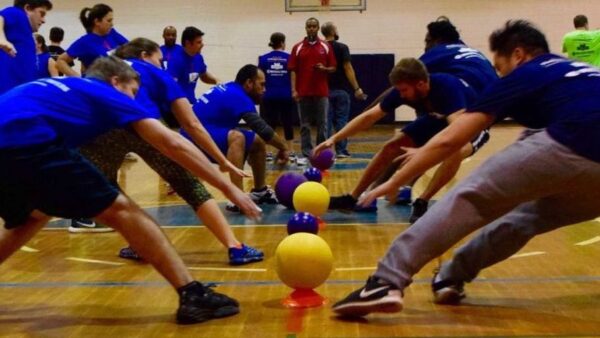Who hasn’t played dodgeball during recess or at summer camp? This dynamic, easy-to-organize, and inclusive team game has stood the test of time. Whether you’re a kid, a teen, or an adult, dodgeball always brings fun, laughter, and action. Let’s explore why this classic game continues to unite generations on the playground and beyond.
What Is Dodgeball?
A fun and dynamic team sport
Dodgeball is a team-based throwing game where players aim to eliminate opponents by hitting them with a ball — without letting it hit the ground first. Once hit, a player is out… at least for a while!
Origins and international variations
The game has ancient roots and can be found in many cultures, from Africa to Asia. The modern version became famous in American schools and pop culture.
Why it remains popular in schools and camps
It’s simple to learn, needs little equipment, and includes players of all skill levels. It boosts energy, teamwork, and creates pure joy for participants.
Dodgeball Rules: How to Play
Players, field, and setup
Two teams of 4 to 10 players each face off on a divided rectangular field. “Prisoners” often go behind the opposing team’s side after being hit.
Game objective: eliminate or free your teammates
The main goal is to eliminate all players on the opposing team by hitting them with the ball. Prisoners can sometimes return to play if certain conditions are met.
Basic rules: throws, jail, re-entry
- A player is out if hit by a ball before it hits the ground.
- Eliminated players go to “prison” behind the enemy team’s zone.
- Some rules allow prisoners to return to the game if a teammate catches a ball or completes a challenge.
Popular variants: double balls, king prisoner, divided zones
- Two balls in play increase the pace and strategy.
- The “king prisoner” stays behind the enemy and can revive teammates.
- Some versions include neutral zones or obstacles for added challenge.
What You Need to Play Dodgeball
A soft or foam ball (for safety)
Choose a lightweight foam ball to avoid injuries, especially for younger players.
Clear field boundaries (chalk, cones, or natural lines)
Make sure your field is clearly marked for fair play. Use chalk lines, cones, or natural markers.
Team colors or jerseys for large groups
Use colored bibs or T-shirts to easily tell the teams apart when there are many players.
Educational and Physical Benefits
Hand-eye coordination and reflexes
Catching, dodging, and aiming sharpen motor skills and quick thinking.
Teamwork and strategy
Players must communicate and work together to succeed, building valuable group dynamics.
Physical exercise and frustration management
Dodgeball is energetic and engaging. It also teaches resilience, patience (while in “prison”), and the joy of returning to the game.
Conclusion
Dodgeball is a timeless group activity that combines movement, teamwork, and laughter. It’s adaptable, safe, and perfect for schools, camps, or even corporate events. Whether you’re dodging or throwing, one thing’s for sure — it’s always more fun with a team!







